Takuru Shimoyama
Domain-Adaptive Full-Face Gaze Estimation via Novel-View-Synthesis and Feature Disentanglement
May 25, 2023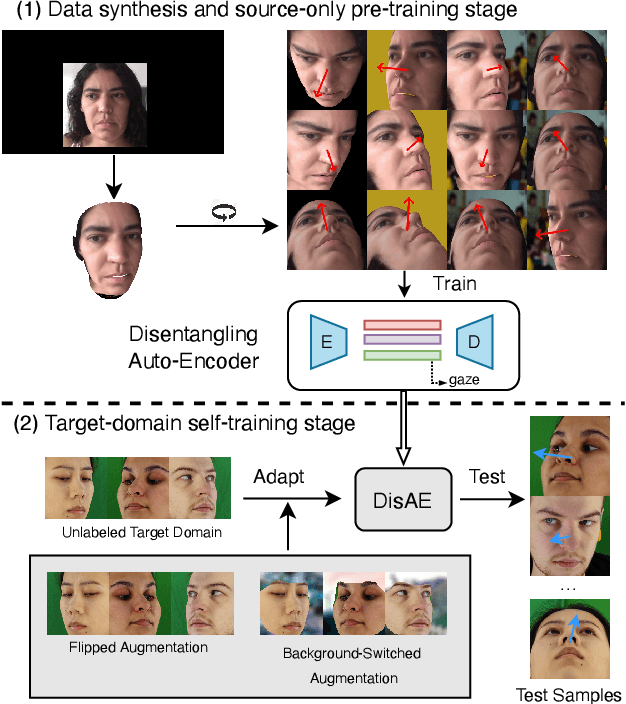
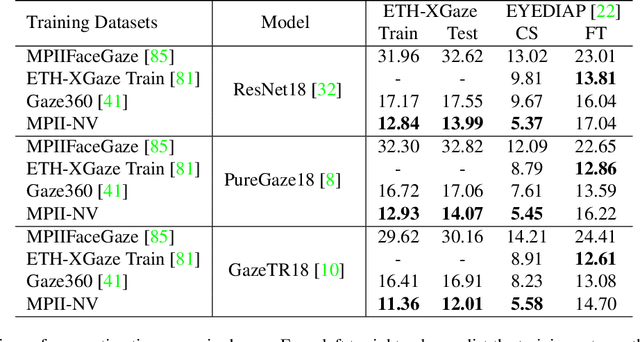

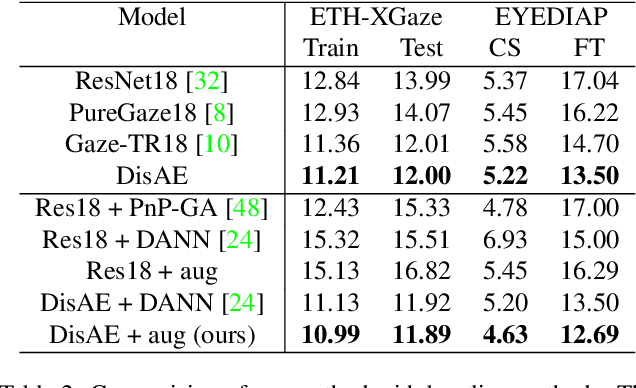
Abstract:Along with the recent development of deep neural networks, appearance-based gaze estimation has succeeded considerably when training and testing within the same domain. Compared to the within-domain task, the variance of different domains makes the cross-domain performance drop severely, preventing gaze estimation deployment in real-world applications. Among all the factors, ranges of head pose and gaze are believed to play a significant role in the final performance of gaze estimation, while collecting large ranges of data is expensive. This work proposes an effective model training pipeline consisting of a training data synthesis and a gaze estimation model for unsupervised domain adaptation. The proposed data synthesis leverages the single-image 3D reconstruction to expand the range of the head poses from the source domain without requiring a 3D facial shape dataset. To bridge the inevitable gap between synthetic and real images, we further propose an unsupervised domain adaptation method suitable for synthetic full-face data. We propose a disentangling autoencoder network to separate gaze-related features and introduce background augmentation consistency loss to utilize the characteristics of the synthetic source domain. Through comprehensive experiments, we show that the model only using monocular-reconstructed synthetic training data can perform comparably to real data with a large label range. Our proposed domain adaptation approach further improves the performance on multiple target domains. The code and data will be available at \url{https://github.com/ut-vision/AdaptiveGaze}.
Learning-by-Novel-View-Synthesis for Full-Face Appearance-based 3D Gaze Estimation
Jan 23, 2022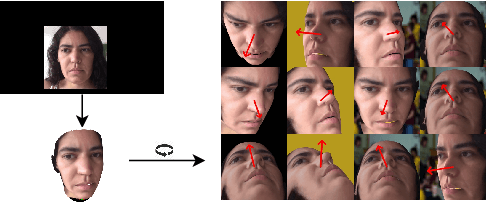
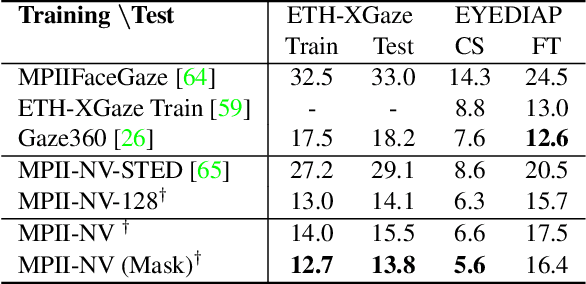

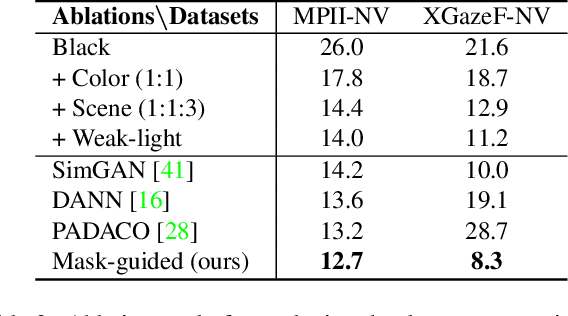
Abstract:Despite recent advances in appearance-based gaze estimation techniques, the need for training data that covers the target head pose and gaze distribution remains a crucial challenge for practical deployment. This work examines a novel approach for synthesizing gaze estimation training data based on monocular 3D face reconstruction. Unlike prior works using multi-view reconstruction, photo-realistic CG models, or generative neural networks, our approach can manipulate and extend the head pose range of existing training data without any additional requirements. We introduce a projective matching procedure to align the reconstructed 3D facial mesh to the camera coordinate system and synthesize face images with accurate gaze labels. We also propose a mask-guided gaze estimation model and data augmentation strategies to further improve the estimation accuracy by taking advantage of the synthetic training data. Experiments using multiple public datasets show that our approach can significantly improve the estimation performance on challenging cross-dataset settings with non-overlapping gaze distributions.
 Add to Chrome
Add to Chrome Add to Firefox
Add to Firefox Add to Edge
Add to Edge